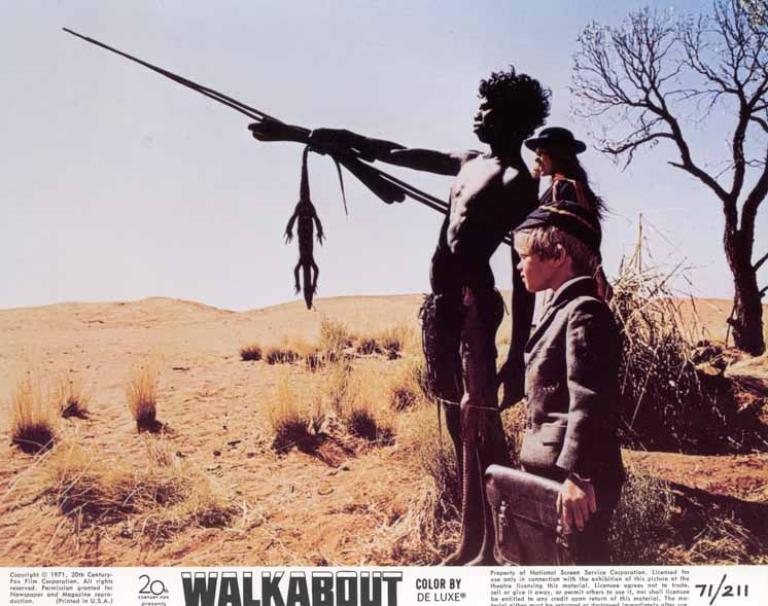
Walkabout lobbycard - David Gulpilil
This lobby card from Walkabout (1970, Nicolas Roeg, Australia) shows David Gulpilil in his first screen role standing between actors Jenny Agutter (who played 'young woman') and Lucien John ('the boy'). Gulpilil was 16 years old when the film was made and Agutter 17 years old.
Lobby cards are designed to promote the film and give an audience an idea of what to expect. In this case the card is meant to clearly show the contrast of cultures between the Aboriginal youth and the two English children against a landscape in which only the Aboriginal youth 'belongs' - though he seems prepared to help them survive.
The depiction of the white English children wearing school uniforms sharply contrasts with Gulpilil's character's bare torso, black skin and attendant spear and dead goanna. In their attire the two children are made to appear incongruous against the harsh landscape while Gulpilil's character appears completely at home. He has hunting tools, food and he points assuredly in the direction they are to take while the children squint warily into the distance. The gulf between the two cultures is clearly evident. This construction of the Aboriginal hunter as 'other' is central to the premise of the film and this lobby card effectively sums up this premise. The film's poster reads, ‘the aborigine and the girl, 30,000 years apart’.
Curator Liz McNiven writes, 'Walkabout may appear to recast the frame in challenging white sensibilities but by retaining a focus on the body it reinforces the colonial framework. In the 1970s white cultures perceived nakedness as a sign of primitivism and the use of clothing, to cover the body, as a sign of superiority. This white mythology stems back to the biblical story of Adam and Eve, foretelling the evils of the body and its unclothed desire.'
The National Film and Sound Archive of Australia acknowledges Australia’s Aboriginal and Torres Strait Islander peoples as the Traditional Custodians of the land on which we work and live and gives respect to their Elders both past and present.



